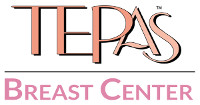Florida Today explains why breast cancer was known as “nun’s disease”. The term “Nun’s Disease” became popular hundreds of years ago due to the high number of nuns being diagnosed with breast cancer. The reason this is so is because lifelong nuns are not reproductive and it makes them have an increased risk of breast cancer, and other cancers like ovarian and uterine cancers. Having children and breastfeeding decreases the chances of breast cancer.
Hormone related fluctuations in estrogen levels during pregnancy and while breastfeeding, decreasing breast cancer diagnoses in women who had reproduced. The number of children a woman has, length of lactation, and age of first pregnancy also affects the risk of a breast cancer diagnosis.
A woman has a 7% decreased risk of breast cancer per birth, and her chances drop another 4% for every year of breastfeeding, according to WebMD. “women who give birth for the first time after age 30 are up to two times as likely to develop breast cancer as women who have their first child before the age of 20.” Susan G. Komen Breast Cancer Foundation state.
In addition, women who have children over the age of 35 have a slightly higher risk for breast cancer than women who don’t have children at all. It’s also estimated that 5 percent of breast cancers could be prevented every year if women were to breastfeed their children for an extra six months.
The best approach to reducing breast cancer is to focus on early detection and be aware of any genetic risk factors that could contribute such as a family history; it’s also important to focus on reducing dietary risks such as not smoking, drinking excessively, maintaining a healthy diet and exercising regularly. Also, monthly self-breast exams especially for women who choose not to reproduce.
Screenings and mammograms are the best for early detection. Mammography reduces breast cancer mortality in the United States by almost 40% according to the American College of Radiology.
Read the full article on Florida Today.

